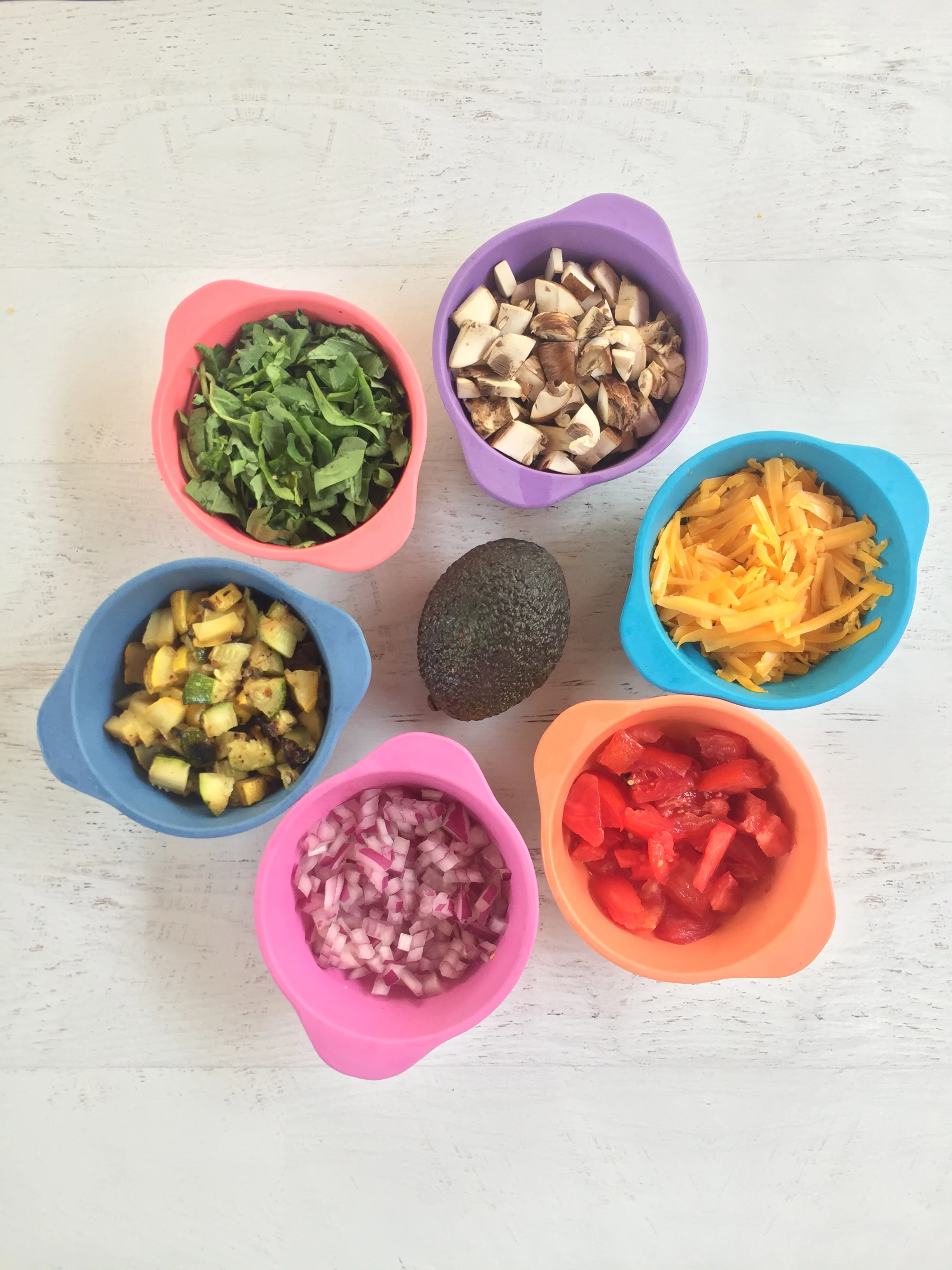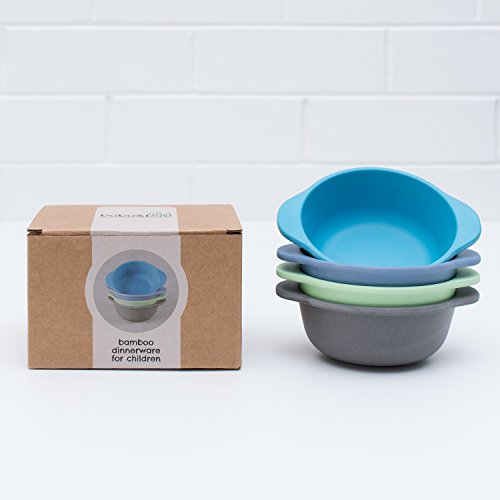Omelet in a Bag
Who else is a big fan of breakfast for dinner?
My guess is if you are a mom, you are! It is so easy, economical, and even for those of us who have picky eaters, we can usually win everyone in the family over with breakfast foods -- especially when you add in the novelty of having them for dinner!
That's why when my husband told me about this idea he saw on YouTube, I knew we needed to recreate this concept. Thanks to Vicki Bensinger's YouTube channel for this idea, info, and inspiration!
Omelet Bar Set-Up
Ingredients:
1-3 raw eggs (still in the shell) per person
Toppings of choice: raw or roasted zucchini, mushrooms, broccoli, asparagus, or bell peppers, spinach, diced tomatoes, chopped onions, shredded cheese, and any breakfast meat of choice (like bacon, sausage, chorizo, ham)
Instructions:
1. Start a large pot of boiling water.
2. In a quart-sized* Ziplock freezer bag, crack 1-3 eggs per person. Seal bag and mash egg until well-scrambled.
3. Unseal Ziplock with scrambled egg. Add desired toppings. Reseal and mash again, until all toppings are well mixed in.
4. Make sure all air is removed from plastic bag. Gently place bag in the pot of boiling water. Turn down heat to maintain a rolling boil, and cook omelet for 15-20 minutes.
5. When done, remove omelet in a bag with tongs. Gently open bag. Probe the omelet with a knife to make sure it is cooked through. If not, reseal bag and return to boiling water for 3-5 minutes more.
6. When done, open Ziplock and pour the omelet from it onto plate. If preferred, you also may pour it onto a medium-hot pan or griddle to lightly crisp the outside.
7. Once cooked to desired doneness, garnish with avocadoes, salsa, and tortillas, or a side of potatoes and fresh fruit. enjoy!
*Note, you can use a gallon-sized freezer Ziplock instead if you would like a longer, thinner omelet. Just decrease the cooking time to 13-15 minutes. For more on the types of accepted bags, see the section titled, "A Note on the Safety of Heating Plastics" below.
Kids in the Kitchen
I love the idea of Build Your Own anything with kids, especially picky eaters. This is a great way for them to be exposed to a variety of options and ways for preparing the same item, while also seeing you as the parent role model a more adventurous spirit with what you include in your omelet. It also gives kids a sense of comfort and control around these foods though by allowing them to decide and manage if and how much of each ingredient they include in their omelet bag.
The more your kids become comfortable with this, ask them what new toppings they would like to put out and try! Encourage them to try even one mushroom, spinach leaf, or other learning it foods, and excite them about "trying to find it in the omelet" once it is cooked. Even if they don't eat it, this is a great way for them to realize they can politely pick out learning it foods. It also helps them realize that these foods don't destroy everything they touch!
Other Tips
This recipe is a GREAT way to use up random leftovers. Rather than tossing out the spinach that is on its last leg or the few leftover veggies that didn't get eaten, chop up and put out as optional toppings.
If including breakfast meats, be sure to look for those without added nitrites and nitrates. Instead, make natural bacon, ham, sausage, and chorizo a "sometimes food" that is eaten in moderation. For more information on processed meats, see this article on My Recommendations for Processed Meats.
A Note on the Safety of Heating Plastics
I admit, I was a bit amazed by how this worked. Having never done the more technical sous vide method of pressure cooking in a bag at a controlled temperature, this seemed like a fun way to make an omelet. However, the physics of how the Ziplock didn't melt when boiled did make me question a bit how healthy it was to be cooking our omelets in a plastic bag in hot water.
Generally, I am not a fan of heating plastics, so I recognize this is an exception to this rule. I do tend to agree with recommendations (such as those from Harvard here), stating not to heat nor store hot foods in plastics. Ideally, I recommend glass or ceramic as the ideal choice. That is why almost all of my meal prep photos are shown using Pyrex Snapware. However, as an occasional novelty, I am curious:
Is using this boil in a bag omelet concept safe - especially when using with young kids?
Even though the Ziplock website states that their bags are BPA- and dioxin-free (see the ingredient list here), they may melt if in water that exceeds their melting point. Polyethylene plastic, which is typically used to make Ziplock brand bags, will start to soften at about 195 degrees Fahrenheit. If you put these bags in boiling water (around 212 degrees F), they will melt. So although the above instructions state to keep the water at a rolling boil, this may be pushing the temperature that is safe for Ziplocks to be exposed to. On the package, Ziplocks state they may be microwaved with a 1-inch vent.
According to Harvard's research on this topic, only containers that pass the test of leaching "the maximum allowable amount is 100–1,000 times less per pound of body weight than the amount shown to harm laboratory animals over a lifetime of use can display a microwave-safe icon, the words "microwave safe," or words to the effect that they're approved for use in microwave ovens." Since Ziplock freezer bags do state they can be used in the microwave, I would take this to mean that they may be used in high temperatures (ideally not to surpass 195 degrees F). Of note, many other types of bags (such as thinner, non-freezer-safe varieties and knock-off brands of Ziplock bags) may be made with lesser-quality ingredients that cause more concern for leaching when subjected to high temperatures.
As always, use your best judgement. While I think our family will still use this approach on occasion, I am going to keep researching this issue prior to making this recipe a mainstay in our "breakfast for dinner" arsenal. I don't suggest cooking in plastic bags as the ideal way to cook all or even any foods, but considering how few plastics we use in our home and especially in cooking, I consider this a low-exposure and infrequent-issue in our household.
Products Used
I love our new Bobo & Boo snack bowls for a variety of uses, but this omelet bar set-up may be a new favorite! They are the perfect size for little hands at snack time, and they work perfectly when setting out a variety of toppings for Build Your Own Omelet Bar!
Please note the following links are affiliate links. These do not cost you any more to use, but in purchasing through these links, you help to support the efforts of Veggies & Virtue! For more info, please visit my disclosure policy.




